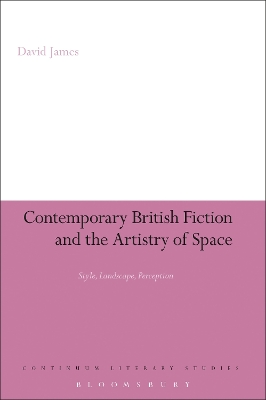Continuum Literary Studies
1 total work
Contemporary British Fiction and the Artistry of Space
by Dr. David James
Published 27 November 2008
This is a rigorous but accessible account of the interface between landscape and style and form in contemporary British fiction.This study examines the importance of space for the way contemporary novelists experiment with aesthetic form, offering an account of how British writers from the past three decades have engaged with landscape depiction as a catalyst for stylistic innovation. James considers the work of over fifteen major British novelists to offer a wide-ranging and accessible commentary on the relationship between landscape and narrative design, while showing that our approach to those spaces mapped by contemporary fiction cannot be divorced from the emotional aspects of reading itself.Moving between established and emerging novelists, the book reveals that spatial poetics allow us to chart distinctive and surprising affinities between practitioners, demonstrating how writers today compel us to pay close attention to technique when linking the depiction of physical places to new developments in novelistic craft.
